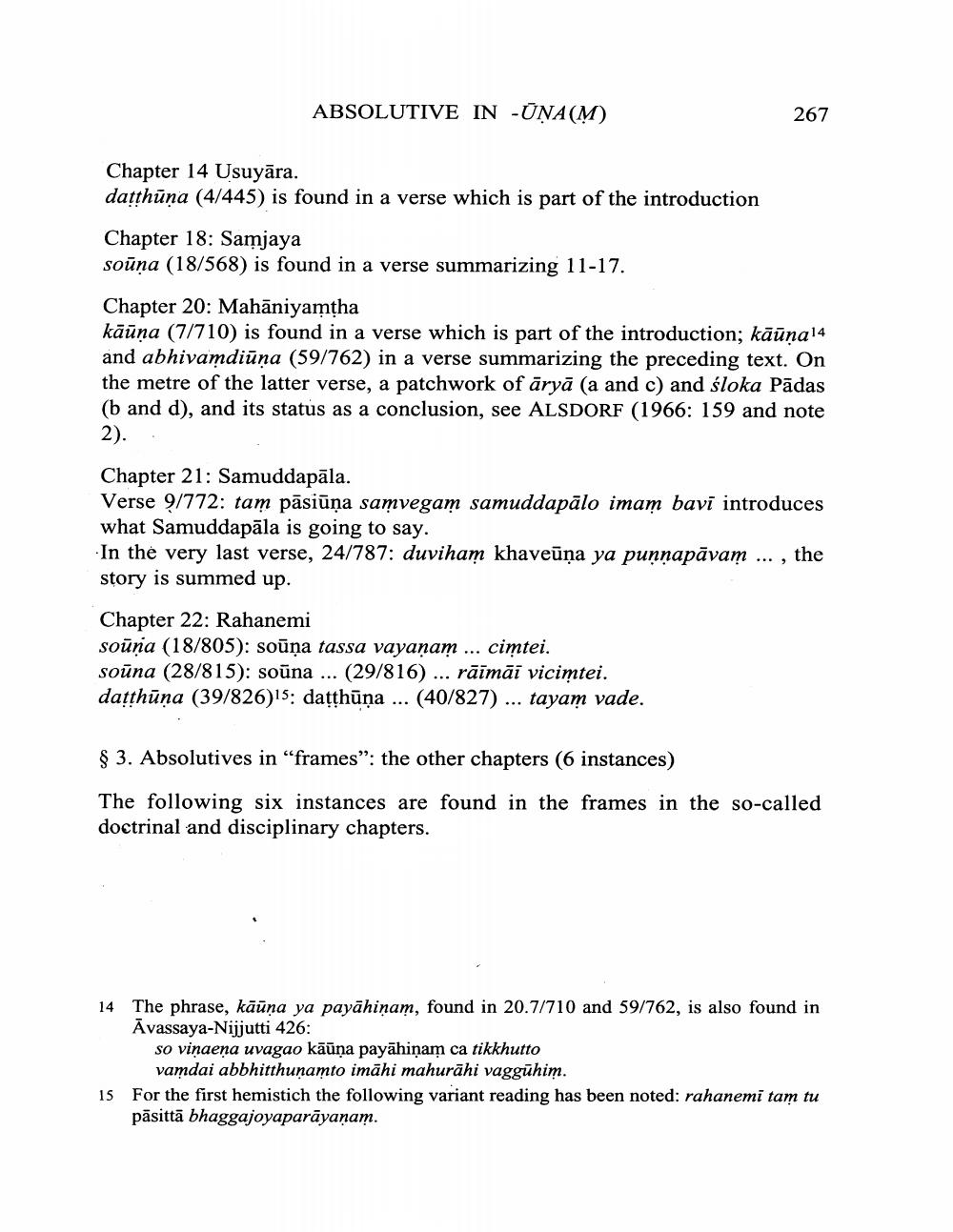Book Title: Distribution Of Absolutive In Una In Ittarajjhaya Author(s): Herman Tieken Publisher: Herman Tieken View full book textPage 7
________________ ABSOLUTIVE IN -ŪNAM) 267 Chapter 14 Usuyāra. datthūņa (4/445) is found in a verse which is part of the introduction Chapter 18: Samjaya soūņa (18/568) is found in a verse summarizing 11-17. Chapter 20: Mahāniyamtha kāūņa (7/710) is found in a verse which is part of the introduction; kāūnal4 and abhivamdiūņa (59/762) in a verse summarizing the preceding text. On the metre of the latter verse, a patchwork of āryā (a and c) and śloka Pādas (b and d), and its status as a conclusion, see ALSDORF (1966: 159 and note 2). . Chapter 21: Samuddapāla. Verse 9/772: tam pāsiūņa samvegam samuddapālo imam bavi introduces what Samuddapāla is going to say. In the very last verse, 24/787: duviham khaveūņa ya punnapāvam ... , the story is summed up. Chapter 22: Rahanemi soūņa (18/805): soūņa tassa vayanam ... cimtei. soūna (28/815): soūna ... (29/816) ... rāīmāi vicimtei. datthūna (39/826)15: datthūņa ... (40/827)... tayam vade. $ 3. Absolutives in "frames": the other chapters (6 instances) The following six instances are found in the frames in the so-called doctrinal and disciplinary chapters. 14 The phrase, kāūņa ya payāhiņam, found in 20.7/710 and 59/762, is also found in Avassaya-Nijjutti 426: so vinaena uvagao kāūņa payāhiņam ca tikkhutto vamdai abbhitthunamto imāhi mahurāhi vaggūhim. 15 For the first hemistich the following variant reading has been noted: rahanemi tam tu pāsittā bhaggajoyaparāyanam.Page Navigation
1 ... 5 6 7 8 9 10 11 12 13 14 15 16 17 18 19 20 21 22 23 24 25 26
